Man-made sand-break forests winter habitat for animals in Tibet

Photo taken on Jan. 6, 2018 shows a part of the Yarlung Tsangpo River near the nature reserve in Shannan City of southwest China's Tibet Autonomous Region. Man-made sand-break forests of the nature reserve have been expanded from 500 mu (33.3 hectares) in the 1950s to 10,200 mu (680 hectares). The forests are now a winter habitat for animals including red deers, blue sheep and kinds of birds. (Xinhua/Zhang Rufeng)

Photo taken on Jan. 6, 2018 shows red deers in a forest of the nature reserve in Shannan City of southwest China's Tibet Autonomous Region. Man-made sand-break forests of the nature reserve have been expanded from 500 mu (33.3 hectares) in the 1950s to 10,200 mu (680 hectares). The forests are now a winter habitat for animals including red deers, blue sheep and kinds of birds. (Xinhua/Zhang Rufeng)
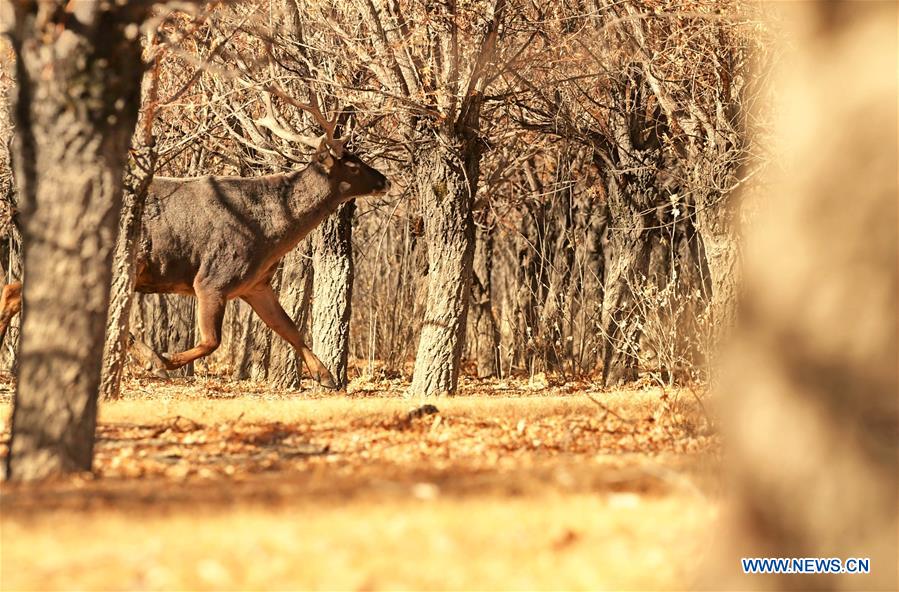
Photo taken on Jan. 6, 2018 shows a red deer in a forest of the nature reserve in Shannan City of southwest China's Tibet Autonomous Region. Man-made sand-break forests of the nature reserve have been expanded from 500 mu (33.3 hectares) in the 1950s to 10,200 mu (680 hectares). The forests are now a winter habitat for animals including red deers, blue sheep and kinds of birds. (Xinhua/Zhang Rufeng)
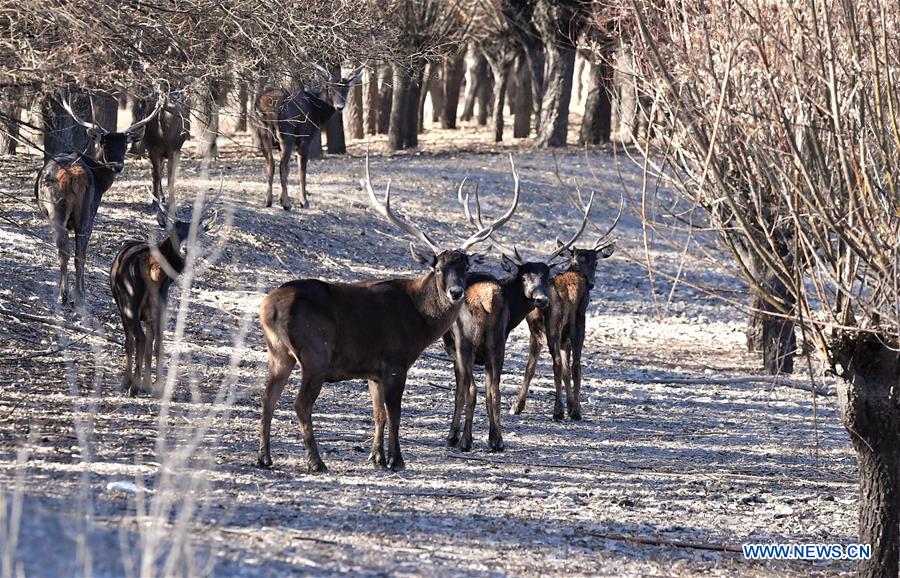
Photo taken on Jan. 6, 2018 shows red deers in a forest of the nature reserve in Shannan City of southwest China's Tibet Autonomous Region. Man-made sand-break forests of the nature reserve have been expanded from 500 mu (33.3 hectares) in the 1950s to 10,200 mu (680 hectares). The forests are now a winter habitat for animals including red deers, blue sheep and kinds of birds. (Xinhua/Zhang Rufeng)
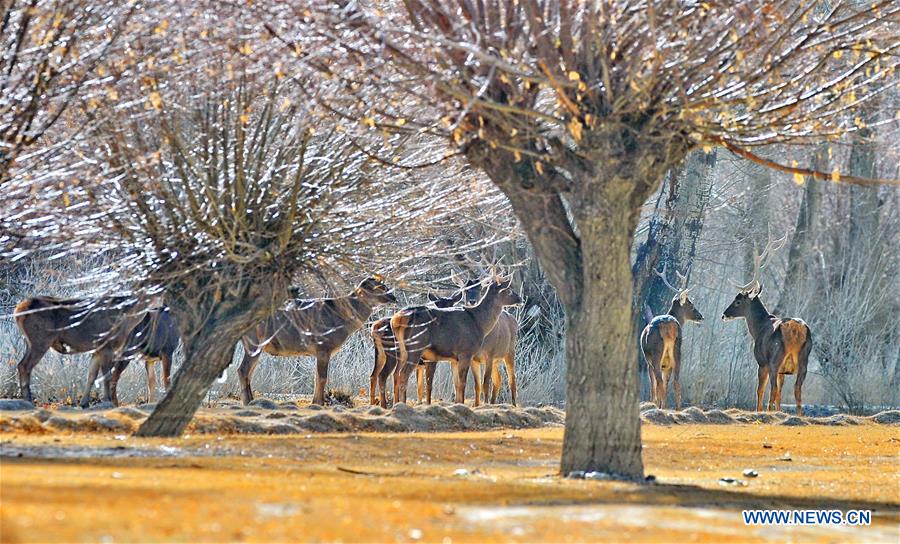
Photo taken on Jan. 6, 2018 shows red deers in a forest of the nature reserve in Shannan City of southwest China's Tibet Autonomous Region. Man-made sand-break forests of the nature reserve have been expanded from 500 mu (33.3 hectares) in the 1950s to 10,200 mu (680 hectares). The forests are now a winter habitat for animals including red deers, blue sheep and kinds of birds. (Xinhua/Zhang Rufeng)
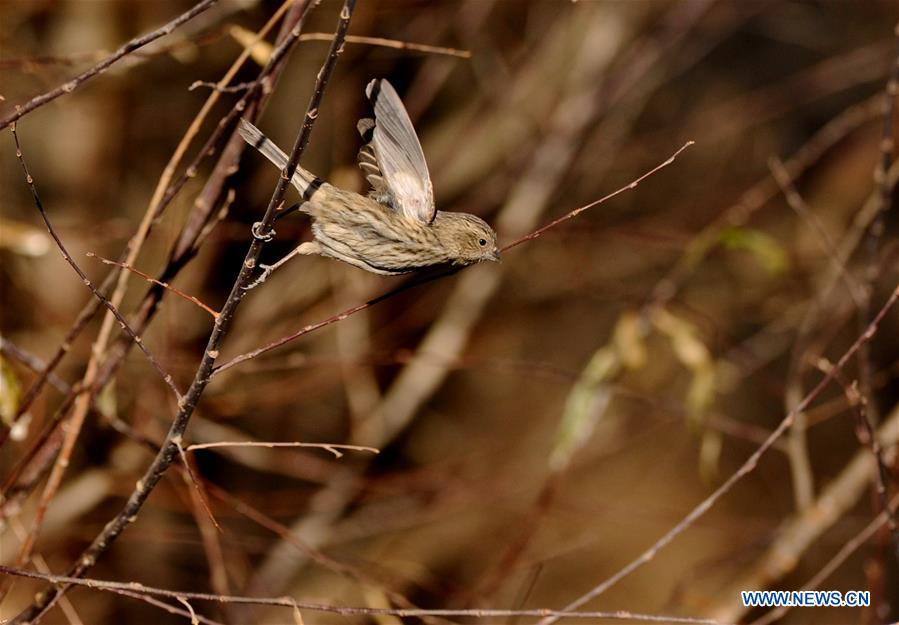
Photo taken on Jan. 6, 2018 shows a bird in a forest of the nature reserve in Shannan City of southwest China's Tibet Autonomous Region. Man-made sand-break forests of the nature reserve have been expanded from 500 mu (33.3 hectares) in the 1950s to 10,200 mu (680 hectares). The forests are now a winter habitat for animals including red deers, blue sheep and kinds of birds. (Xinhua/Zhang Rufeng)
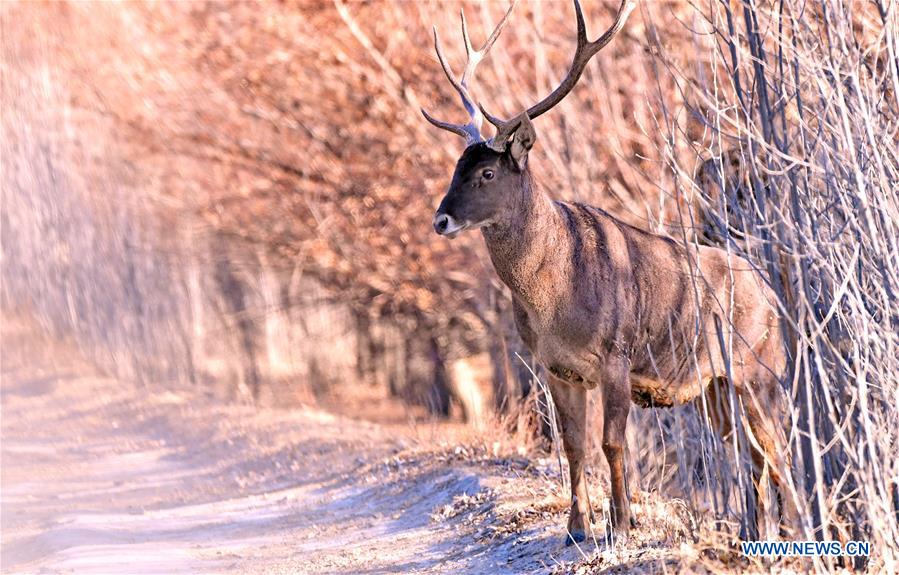
Photo taken on Jan. 6, 2018 shows a red deer in a forest of the nature reserve in Shannan City of southwest China's Tibet Autonomous Region. Man-made sand-break forests of the nature reserve have been expanded from 500 mu (33.3 hectares) in the 1950s to 10,200 mu (680 hectares). The forests are now a winter habitat for animals including red deers, blue sheep and kinds of birds. (Xinhua/Zhang Rufeng)
Your Comment
Name E-mailRelated News
More >>-
;
-
-
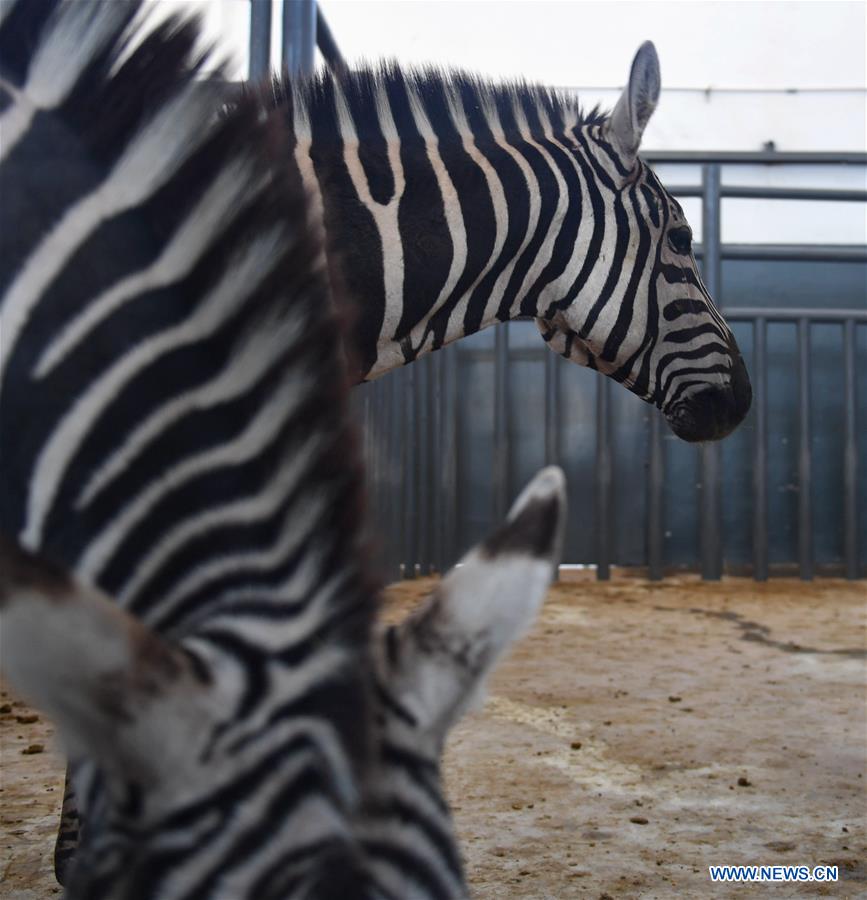
-
Methods implemented to accommodate animals to plat
From oxygen generation, temperature control to humidification, various methods have been implemented to accommodate animals to plateau conditions at the zoo.
-
-
-

-
Wild animals in China's Qilianshan National Nature
Images of several wild animals were captured by infrared cameras during a wildlife survey in the area.
-

